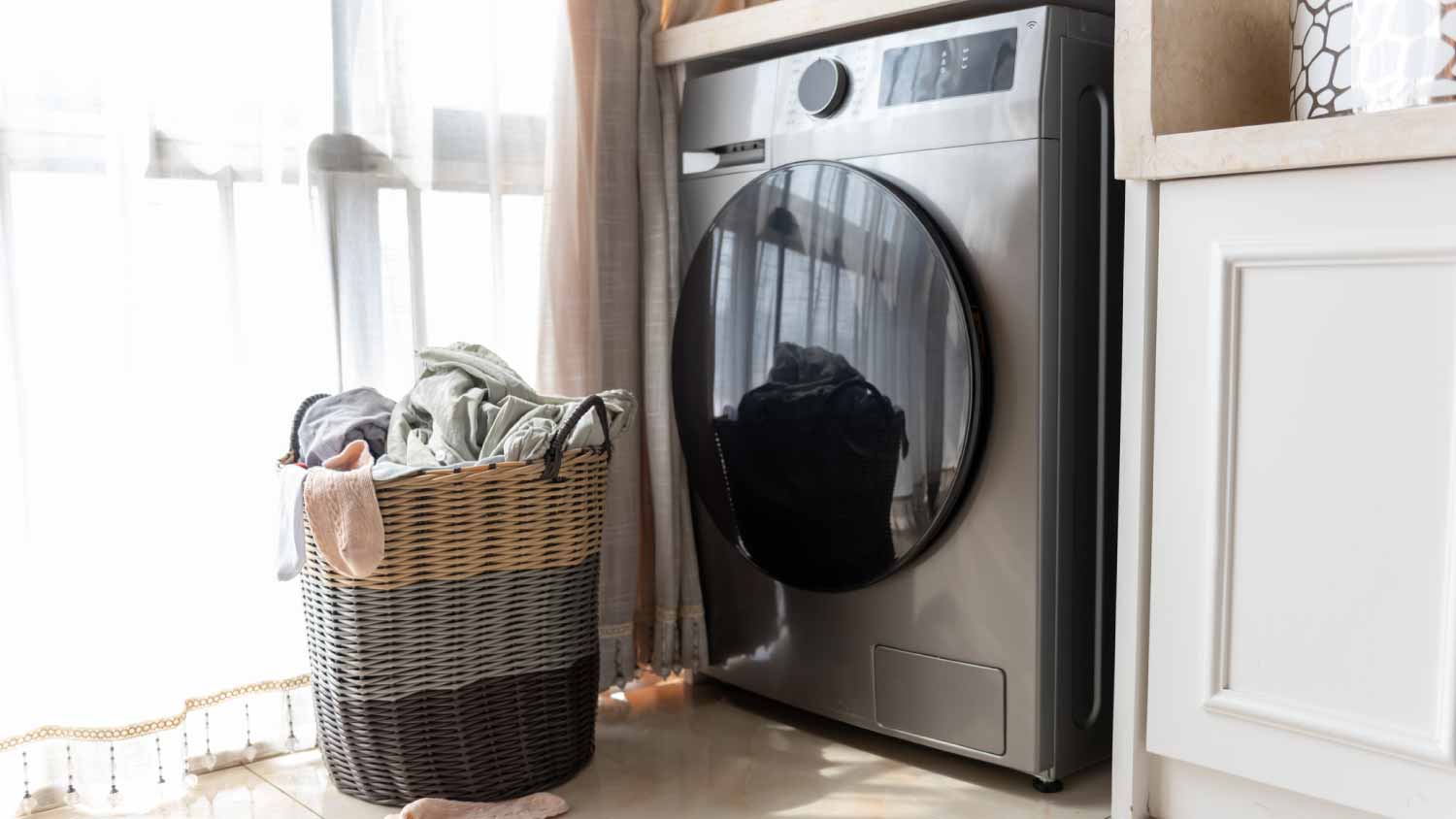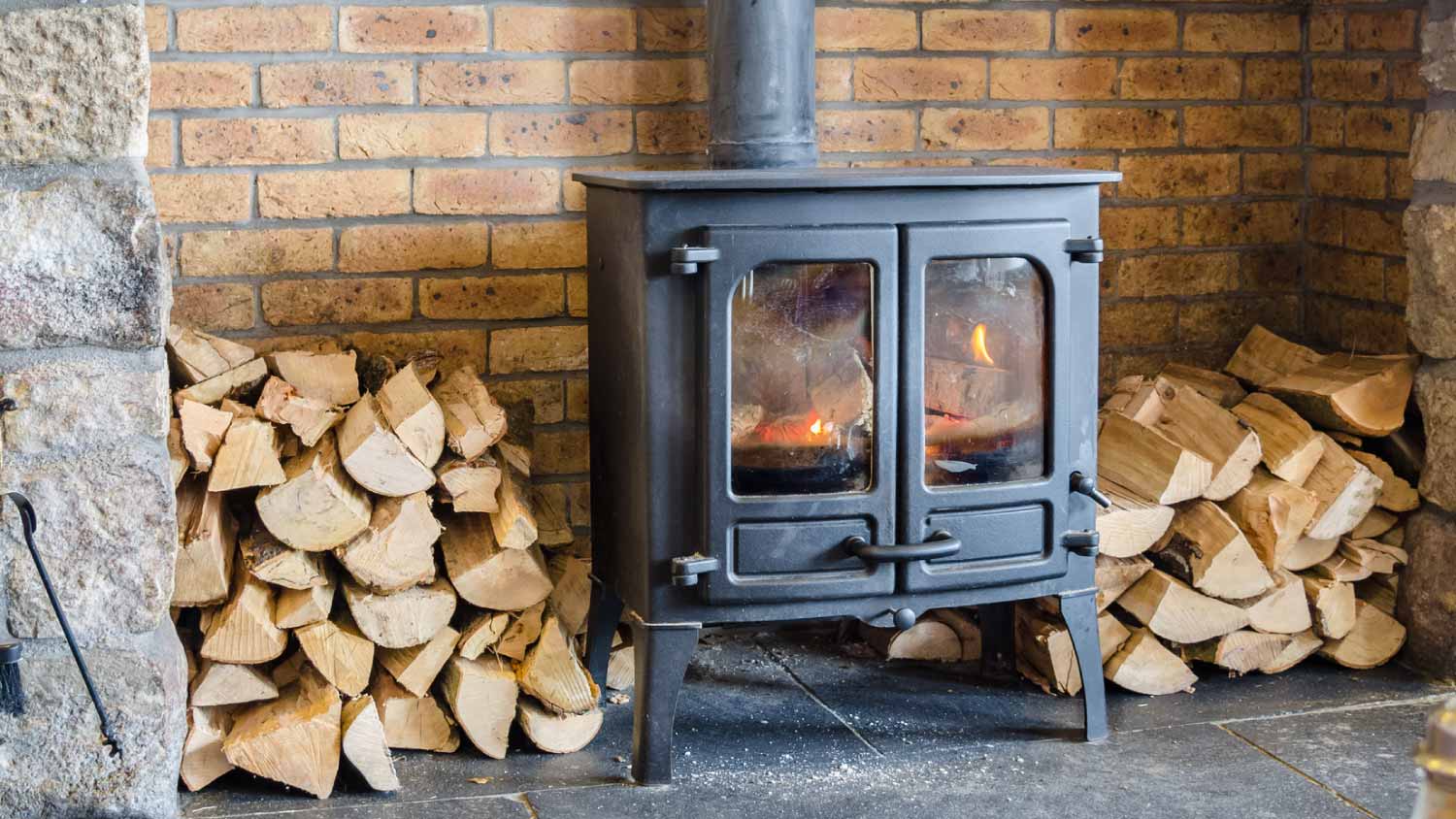What Are the Parts of a Stove?
Not all stoves are made the same


Control panels, knobs, cooktop elements, oven, and oven elements, are common parts shared between electric and gas stoves.
Gas stove cooktops use gas burners. Electric cooktops use heating coils or ceramic glass surfaces with heating elements underneath.
Converting an electric stove to a gas stove costs from $125 to $2,000.
Keeping your stove parts clean can help extend your stove’s life span.
Gas and electric stoves share some common parts. Your stove also contains more parts under the surface that are not visible on the surface but are essential to your stove’s functionality. Knowing the parts of a stove teaches you how to upkeep your stove and run a quick diagnosis when things go wrong.
A common stove, regardless of electric or gas-powered, comes with the following parts:
A control panel
Knobs
Oven
Oven racks
Drip Pan
Warming drawer
Meanwhile, the stovetop’s cooking elements are different depending on what type of stove you have.

Control Panel
As the name suggests, a control panel controls your stove’s functionality. Usually, the panel controls the oven portion of the stove, with a general timer, an auto-shutoff timer, and an auto-cleaning button if your stove comes with that option. It also controls the hood vent and oven light, if applicable.
Electric stoves, especially newer ones, might have more comprehensive control panels than gas stoves.
Knobs
All stoves come with knobs. They are turn dials that control the heat of each cooktop. Gas stove knobs directly adjust the scale of the flame, whereas electric stove knobs control the output wattage, which then translates into different heat levels.
Knobs may be marked with measurements indicating low, medium, or high heat or numbers often ranging from 1 through 8. On a gas stove, you may also see a “lit” indicator where you turn your knob to ignite the flame.
Oven
The oven is an essential part of the stove. Most ovens come with the following components:
Oven racks: often made with steel or enameled metal.
Oven vents: ensures even temperature in the oven by creating a small airflow
Thermostat: connects to the control panel for preheating, temperature control, and broiling
Warming drawer: keep food warm or let flour dough rise.
Most ovens also have a broil element at the top of the oven for surface broiling. Some might have high and low broiling settings.
Drip Pans
Older stoves often have drip pans under the burners to catch cooking debris, while newer stoves with a glass surface typically do not have this component.
Drip pans are easy to clean and maintain. For gas stoves, simply remove the metal grates, and you’ll be able to clean the drip pans as you clean the stove surface. For coil electric stoves, you’ll need to unplug the cooking coils to reach the drip pans underneath.
Parts of a Gas Stove

A gas stove ignites natural gas and allows you to cook over a real flame at home. Hence, it is deeply loved by those who enjoy the old-school ways of cooking. In addition to the common parts above, a gas stove has a few unique components: oven igniter, oven safety gas valve, gas pressure regulator, surface burner control valve, spark igniter switch and electrode, and spark module.
Oven Igniter
Do you see the glowing white bar in the oven? That’s your gas stove’s oven igniter. It ignites the gas for the oven burner. Some gas ovens have two igniters, one for regular baking and the other for broiling.
If your oven is not heating up, the igniter is often the problem. Most replacement igniters cost less than $50, but some higher-end brands may cost over $80.
Oven Safety Gas Valve
When the oven igniter is hot, the oven safety gas valve opens to let gas into the bake or broil burners. If your igniter is functioning properly, but your oven doesn’t heat up, you might have a faulty safety gas valve.
Gas Pressure Regulator
The regulator controls incoming gas pressure, ensuring that gas flows in at a safe and consistent level. If your gas stove shuts down abruptly or your flame turns yellow or orange, your gas pressure regulator might be bad. Ask a professional to inspect it immediately, as a faulty regulator can lead to gas leaks.
Surface Burner Control Valve
The burner control valves allow you to control the heat level by controlling how much gas is let through. Each control valve is connected to an ignition switch.
Spark Igniter Switch and Electrode
By turning your knob to “lite,” you turn on the spark igniter switch. The switch sends a signal to the insulated spark ignite electrode, which then sends a spark to the burner. If your switch and electrode are working, you should hear a ticking or clicking noise when the knob is set to “lite.”
Spark Module
The spark module provides electric voltages that power the igniter electrode, which lights the flame when a signal is received from the igniter switch. If you think something has gone wrong, do not attempt to replace or diagnose a spark module. Hire a professional to inspect and repair it.
Parts of an Electric Stove

Similar to gas stoves, electric stoves also have their unique surface elements, switches, and oven elements.
Surface Element
There are three common types of electric stove surface elements: radiant surface, coil surface, and solid disks. Coil surfaces use a simple plug-in mechanism and are the easiest to replace. However, debris tends to get stuck between the coils and end up getting burnt. Radiant surfaces and solid disks are mounted on your stovetop and are easier to clean. However, replacements should be done by a licensed professional.
Surface Element Switch
Also known as the surface burner switch, this element is mounted on your control panel. If your electric stove isn’t working, something is most likely wrong with the surface element switch. A new surface element switch can cost from $67 to $104.
Ceramic Glass Cooktop
Newer electric stoves have clean and leak-resistant ceramic glass cooktops. These surfaces usually have decent impact and scratch resistance. To clean your ceramic glass surface, use a food-safe surface cleaner and a soft towel. Harder scrubs can scratch the surface.
If you notice obvious dents, cracks, or scratches on the cooking surface, it might be time for a replacement. A new glass stovetop costs from $200 to $1,000, but sometimes, it might be a better deal to replace the stove altogether.
Bake and Broil Element
The bake element is at the bottom of your electric oven, whereas the broil element is at the top. If your bake and broil elements are visible, you can try to replace them yourself if you’re experienced with appliances. However, some models have those elements hidden, and a licensed professional must do the repairs.
Parts of an Induction Stove
An induction stove uses an electromagnetic field to turn suitable cookware into its own heat source. This allows accurate temperature control with improved safety and energy efficiency. Common parts of an induction stove include the glass surface, the induction heating system, a control panel, and oven elements.
The induction heating system is the core of an induction range. It consists of a tank circuit, a power supply, and a work coil and often sits underneath the glass surface. This intricate system should not be replaced by an unlicensed and untrained individual. On the rare occasion an induction heating system fails, it costs between $200 and $800 to repair the stove.
Frequently Asked Questions
It can cost anywhere from $125 to $2,000 to convert an electric stove to a gas stove, depending on whether your house already uses gas and if old gas supply lines still exist in the kitchen. Keep in mind that electric stoves are safer than gas stoves. If your main complaint about your electric stove is the lack of temperature and heat level control accuracy, an induction stove might be a better option since it doesn’t introduce new safety hazards.
You can find replacement stove parts for popular brands at local hardware stores or major retailers. However, you might find the best deal by directly buying online from the manufacturer. While there are some universal parts, the manufacturer can also help you find parts that are specific to your stove’s make and model.
Sometimes, replacing your stove may be the best course of action. For example, your stove may be reaching the end of its life span. Other times, the repair may cost too much, or the stove may simply be too broken. If your stove has been having small issues frequently, it might also be a good idea to take the opportunity and upgrade it.
Ask a professional appliance repair pro to inspect your stove. They can tell you what went wrong and whether it makes more sense to replace it with a new one. We do not recommend installing a new stove yourself. A licensed and insured contractor will make sure the job is done right. They may also help you get a better deal on the new stove.



.jpg?impolicy=leadImage)

- Appliance Repair Companies
- Washing Machine Repair
- Dryer Repair
- Refrigerator Repair
- Dishwasher Repair
- Oven Repair
- Wood & Pellet Stove Repair
- Freezer Repair Services
- Wood Stove Services
- Gas Stove Repair
- Emergency Appliance Repair Companies
- Ice Maker Repair
- Gas Appliance Repair
- GE Appliance Repair
- GE Refrigerator Repair
- GE Dryer Repair
- GE Dishwasher Repair
- GE Washing Machine Repair
- Samsung Appliance Repair
- Samsung Refrigerator Repair
- Samsung Dryer Repair
- Samsung Washer Repair
- Samsung Dishwasher Repair
- Samsung Oven Repair
- Whirlpool Repair
- Whirlpool Refrigerator Repair
- Whirlpool Washer Repair
- Whirlpool Dryer Repair
- Whirlpool Oven Repair
- Maytag Appliance Repair
- Maytag Refrigerator Repair
- Maytag Washer Repair
- Maytag Dryer Repair
- Maytag Dishwasher Repair
- Kitchenaid Appliance Repair
- Kitchenaid Oven Repair
- Kitchenaid Refrigerator Repair
- Kenmore Appliance Repair
- Kenmore Dishwasher Repair
- Kenmore Washer Repair
- Kenmore Dryer Repair
- LG Refrigerator Repair
- Bosch Appliance Repair
- Kenmore Refrigerator Repair
- LG Appliance Repair Services
- GE Microwave Repair
- Electrolux Appliance Repair
- Electrolux Washer Repair
- Kitchenaid Dishwasher Repair Services
- Wood Stove Inspection
- Dishwasher Installation
- Trash Compactor Repair
- Why Is My Gas Stove Not Lighting? 11 Common Issues
- 5 Types of Stoves to Consider for Your Kitchen
- How Long Do Gas Stoves Last?
- Should You Convert Your Electric Stove to Gas? 5 Things to Consider
- Gas vs. Electric Ovens: Pros, Cons, Cost, and More
- Stove Dimensions: A Guide to Measuring All Range Sizes
- Should I Repair or Replace my Oven?
- How to Install a Pellet Stove: Freestanding, Wall-Mounted, and Insert
- How to Light a Gas Fireplace No Matter the Remote or Switch Type
- How to Steam Clean Your Oven Easily










